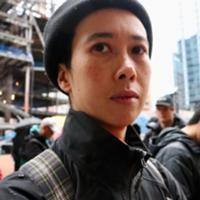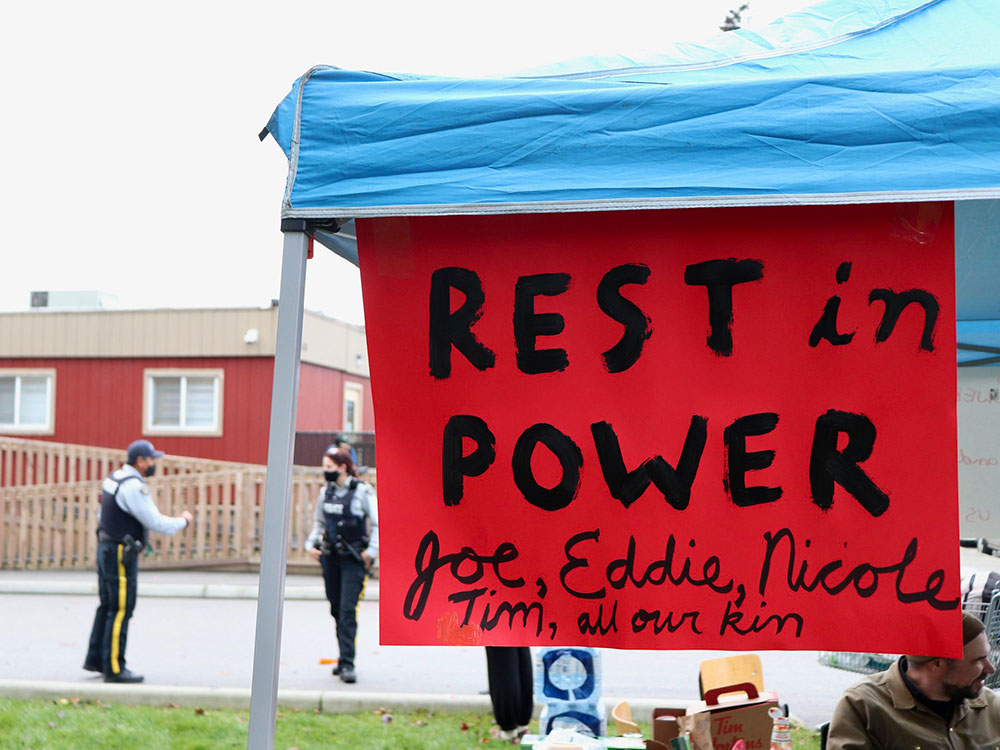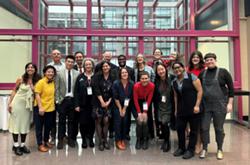In March, a list of people who have died in supportive housing buildings in Maple Ridge started circulating on Facebook, catching the attention of media and B.C.’s Attorney General David Eby.
The list was posted by Diedra Lucas, who was formerly homeless and remains a part of the local street community. It features the names of 21 people who have died across three supportive housing buildings in Maple Ridge: Alouette Heights, Garibaldi Ridge and Royal Crescent. Coast Mental Health, a Vancouver-based non-profit, operates all of them.
In response to the list, Eby announced an independent review focusing solely on the Royal Crescent building.
Lucas's action and the independent review may offer a chance to critically examine supportive housing, which is widely viewed as a solution to homelessness.
BC Housing describes supportive housing as “support services to people experiencing homelessness to help them maintain their housing,” including 24-7 staffing, meal programs and referrals to other resources. Supportive housing buildings are managed by contractors to the province, whose staff are always on the premises and can exert greater control over tenants' lives than independent settings.
As an organizer of Maple Ridge's street community, I've witnessed the deadly shortcomings of this approach and seen people resist supportive housing both by refusing to move in and as tenants fighting their landlords. Eby's review should invite the criticisms of those who have suffered the most from supportive housing and recommend sweeping changes to this failed system.
Here are some widely perceived myths about supportive housing in British Columbia.
1. No, supportive housing is not a solution to homelessness.
BC Housing's own numbers show only about 80 per cent of homeless people housed by BC Housing are still housed after six months. The target set for 2021-22 is 83 per cent.
That means roughly one out of five homeless people placed in supportive housing remain in it for less than six months. Where do they go next?
BC Housing's public data does not say where people move to, but given the severe lack of affordable market housing and the type-casting of people who have been homeless as “hard to house” and therefore not suitable for independent social housing, I would guess that most people get evicted back to the street.
I spoke with five residents of Royal Crescent who all moved in when the building first opened in October 2018. We made a list of the people who are still living in the building from that initial cohort, and could only come up with 14 names. All five agreed that of the other 39 people, most died or were evicted.
If true, only 25 per cent of the people who first moved in are still living at Royal Crescent four years later.
BC Housing told me that there have only been 18 evictions at Royal Crescent between October 2018 and March 2022. They declined to share numbers of deaths at the site.
Coast Mental Health said they don't provide public information about fatalities because “the official cause of death is the responsibility of the BC Coroner.”
Far from being a solution to homelessness, supportive housing lends itself to producing evictions. Round-the-clock, 24-7 surveillance and a mandate to regulate tenants' lives empower supportive housing providers to evict tenants over conflicts and violence that the street community has its own ways of managing — when it's provided the autonomy to do so.
For example, in May 2020, Coast Mental Health evicted three Royal Crescent tenants in one day. The group included Eva Bardonnex, who was a member of Red Braid Alliance, a group that I was also a part of. We helped organize Anita Place Tent City in Maple Ridge and continued work against evictions, supportive housing and police violence after the tent city was shut down.
Bardonnex was evicted because her boyfriend, who was not a resident, kicked in the door of a neighbour's suite and discharged a fire extinguisher inside it. The conflict was prompted by an incident of bike theft. Bardonnex’s boyfriend and the neighbour resolved their conflict later. Although the neighbor did not think Bardonnex should be evicted, Bardonnex lost her arbitration hearing.
Wendy Ross, a Royal Crescent tenant who has lived there since 2018, is currently facing an eviction for a similar reason: her boyfriend, who was evicted from Royal Crescent in July 2020 and subsequently barred, has repeatedly visited the building.
As in many tight-knit communities subject to police harassment, the street community in Maple Ridge has internal ways of resolving conflict. They are not perfect, but when conflict resolution becomes the purview of staff hired by a landlord, the consequences are dire.
In both of the above cases, evictions for cause in the name of tenant safety threaten to put already vulnerable women in even more unsafe conditions.
2. Despite the name, many residents don’t feel supported.
Residents have often pointed out to me the disconnect between being told that they live in housing intended to support people with mental illness and substance use, and finding instead that staff appear to have little mental health knowledge.
Linda Howard, who lived at Anita Place Tent City until she moved into Royal Crescent, told me, “I get no support.” So did Gerald William Sharpe, who, like Howard, was part of the first cohort to move into Maple Ridge supportive housing from the tent city.
Importantly, both Howard and Sharpe do not feel like they need any support, aside from locating affordable, permanent housing they can live in independently.
Most people rely on friends and relatives for their day-to-day support, not professionals. But in Maple Ridge and elsewhere, supportive housing managers have instituted strict restrictions on guests. In a Supreme Court case from 2017, Portland Hotel Society argued that guest restrictions were about protecting residents' safety. Tenants argued that such restrictions invaded their privacy, restricted their ability to see friends and family and discriminates against poor tenants.
These rules have the perverse effect of leaving people isolated and more prone to using drugs alone, which puts them at higher risk of dying by drug poisoning.
3. It’s called housing, but it can feel like incarceration.
Linda Whitford, known as “Mama Bear” to her friends, was a member of Red Braid Alliance along with myself and Bardonnex. She died in Alouette Heights, alone, in May 2020.
At a meeting with the street community that took place a few weeks before Whitford died, residents of Coast Mental Health's buildings warned the building-wide guest ban that Coast had instituted would isolate residents and put them at risk.
Whitford, who was Indigenous, said at the meeting, “Supportive housing is colonialism. They pay for your housing and that makes them think they can control your life.... They know that if we are together and strong then it's harder to control us. So they are trying to keep us apart. No other [non-supportive] buildings are banning guests!
"It's discriminatory.”
James Anderson lived in a cabin he built in Anita Place and was one of the last residents to move out. He was evicted from Garibaldi Ridge in 2020, after living there for about a year. He describes living there as “just like doing time.”
Ted Hadju moved into Garibaldi Ridge when it first opened in 2019. He is an outspoken tenant rights advocate and helped plan a press conference that spoke out against Coast's building-wide guest bans. He estimates that about a dozen residents have been evicted since he moved in, most of them women.
Like Anderson, Hadju described living in Garibaldi Ridge as “light incarceration.”
4. It’s regulated by the government, but tenants often are deprived of rights.
B.C.’s Residential Tenancy Act includes supportive housing, while excluding transitional housing.
But in practice, I’ve observed that supportive housing providers regularly behave as if they are exempt from the act.
In B.C., a landlord can legally end a tenancy by providing one months’ notice to the tenant if the situation meets a specific set of criteria detailed in the Residential Tenancy Act.
But a 2019 study in the International Journal of Drug Policy involving drug users who experienced evictions living in the Downtown Eastside notes that “Most participants were evicted unlawfully, unfairly and into homelessness.”
The report’s authors found that residents of non-profit-run housing “found their housing security further undermined through the denial of rights extended to privately-housed tenants.” Most evictions by non-profit providers were issued verbally and enacted within one week.
Just like in the Downtown Eastside, residents of supportive housing in Maple Ridge are regularly evicted on short notice and without any protection of their tenant rights.
I asked BC Housing if, through its operating agreements with non-profits, it mandates that they follow the Residential Tenancy Act. I also asked whether high-profile attention, like two Supreme Court cases that ruled in favour of tenants, plus a 2020 open letter against guest bans in supportive housing, have impacted its operating agreements.
A spokesperson said that BC Housing “requires non-profit housing operators to enter into a residency agreement in compliance with governing legislation. This can take the form of a tenancy agreement or program participant agreement, and may be tested against the requirements of the Residential Tenancy Act.”
But the act makes clear under Section 5 that landlords and tenants cannot contract themselves out of the act. According to the relevant Residential Tenancy Policy guideline, “any policies put in place by supportive housing providers must be consistent with the act and regulations.”
I asked Coast Mental Health why a program agreement, obtained in 2021 by housing advocate Chris Bossley and signed by the evicted tenant for whom she was advocating, contains points that seem to contradict the Residential Tenancy Act.
Susan Hancock, a Coast senior manager, gave a conflicting answer. On the one hand, she said that Coast knows program agreements must comply with the act and that they would therefore make a change to the agreement. But she also said that Coast's goal is to “clarify” for tenants that “they’re not in a typical Residential Tenancy Agreement relationship between landlord and tenant.”
Jenice, who is one of the 14 original residents at Royal Crescent who still live in the building, feels that “half the reason I haven't been kicked out is because I know my rights.”
5. It’s called a safe alternative to tent cities, but can be a gateway to death.
Joe Baumann was a former Anita Place council member who resisted moving into the “mods,” as the street community calls the Royal Crescent and Garibaldi Ridge. Even after the tent city closed, he preferred to keep his freedom and autonomy and lived in other, short-term camps. But after suffering an attack, like many homeless people who camp alone and face harsh and often violent anti-homeless opposition by many Maple Ridge citizens, he moved into Royal Crescent. In October 2020, less than a year later, he died of drug poisoning.
The same month Baumann died, three other former Anita Place residents died as well. Nicole, whom I once interviewed for the camp's newsletter, died of drug poisoning shortly after being evicted from Royal Crescent.
Eddie, who had been a member of the tent city council along with Baumann, died of drug poisoning as well. A former resident told me that Tim, also a resident of Royal Crescent at the time, died in the hallway.
The independent review could help shed light on how common practices in supportive housing, like guest restrictions and high rates of evictions (assuming the high attrition rate in supportive housing is not due to residents moving into better housing) seem to contribute to the early deaths of homeless people.
A better alternative: independent social housing
Supportive housing as a means to end homelessness was pioneered by the BC Liberals through their 2006 Housing Matters BC plan.
Between 2001 and 2011, the number of supportive housing units in B.C. quadrupled from 1,300 to 5,400. Supportive housing has only grown under the NDP's helm: today there are well over 12,000 units of supportive and transitional housing throughout the province.
Supportive housing as currently practiced in this province sounds like a reasonable and caring approach. Who doesn't want both support and housing?
But as many residents have said, the problem is in the integration of support with housing.
For many, the difference between having housing and mental health care, and receiving mental health care from your landlord, is the difference between living in a home and living in an institution.
That is why, in Maple Ridge, residents of Anita Place Tent City collectively opposed supportive housing as a response to homelessness before Royal Crescent and Garibaldi Ridge opened in 2018 and 2019, respectively.
Informed by experiences at existing Alouette Heights, residents presented a list of housing demands to BC Housing at a meeting in September 2017 that included “Resident-run not ‘supportive’ institutional housing.”
There are key differences between supportive housing and independent social housing.
Supportive housing facilities such as Royal Crescent and Garibaldi Ridge provide two daily meals to residents, a 24-hour staff presence, and a psychiatrist who visits each building weekly.
Independent social housing, on the other hand, is government-subsidized housing in which housing providers are not expected to be supporting tenants through the delivery of services and 24-7 staff.
In defense of autonomy, a case for alternatives
Royal Crescent resident Jenice believes that non-profit landlords should not be tasked with providing people with support, and that a total separation of these functions "would work a lot better. It's a conflict of interest."
Every former and current supportive housing resident I spoke with would rather live in staff-free housing. Some expressed that one reform that could make supportive housing work and feel better is for it to be managed by residents themselves.
These views should be taken seriously by the review of the Royal Crescent building. Rather than buying in to the myths I’ve listed here, the panel should investigate alternatives to supportive housing that defend the autonomy of poor people by keeping the provision of supports separate from the provision of housing. Omitting the exploration of alternatives to supportive housing that support autonomy risks paving the way for even greater institutionalization, in line with the province's new strategy of “complex care housing” for people who are poor.
Supportive housing plays an essential role in the neoliberal story that individual shortcomings and behaviour are the primary causes of homelessness. Within this narrative, high rates of evictions from supportive housing providers prove that homeless people are indeed “hard to house.” But if we reject the fundamental assumption that mass poverty is the result of individual traits, those high rates of evictions become proof that supportive housing fails to end homelessness while mystifying its economic causes.
It is time to pivot attention away from the imagined pathologies of the poor toward the unaddressed, economic determiners of the housing crisis: stagnant wages and welfare rates, gentrification, financialization and market housing. ![]()
Read more: Rights + Justice, BC Politics, Housing
















Tyee Commenting Guidelines
Comments that violate guidelines risk being deleted, and violations may result in a temporary or permanent user ban. Maintain the spirit of good conversation to stay in the discussion.
*Please note The Tyee is not a forum for spreading misinformation about COVID-19, denying its existence or minimizing its risk to public health.
Do:
Do not: